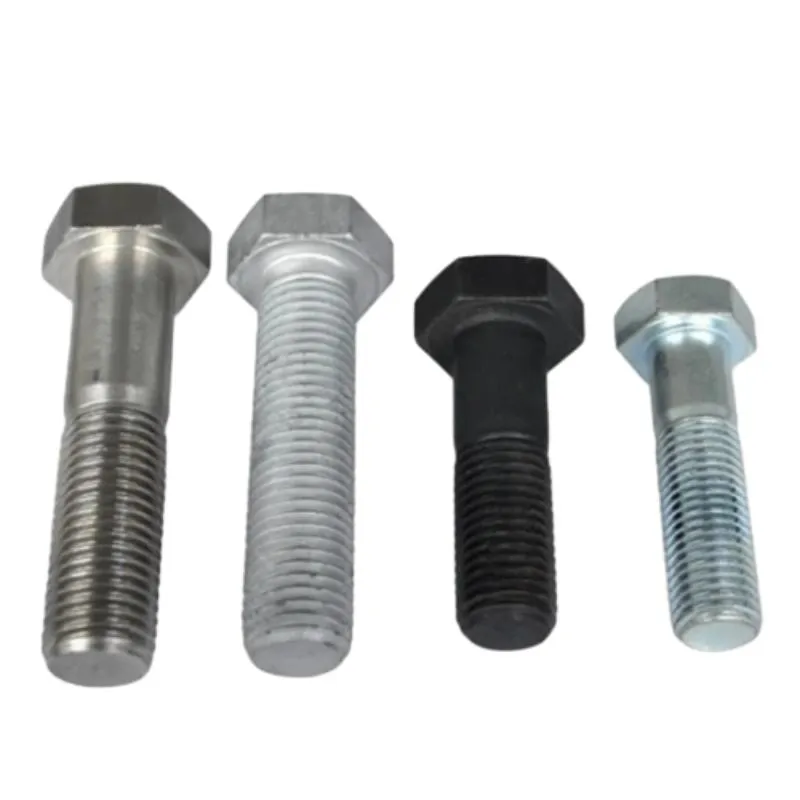Dec . 24, 2024 10:44 Back to list
Tips for Safely Removing Carriage Bolts from Your Projects
Removing Carriage Bolts Tips and Techniques
Carriage bolts are commonly used fasteners in the construction and woodworking industries, known for their rounded heads and square shafts that prevent them from turning once they’re tightened. While they are strong and durable, there may come a time when you need to remove them. Whether you're disassembling furniture, installing new hardware, or taking apart a structure, understanding how to effectively remove carriage bolts is essential. This article will guide you through various techniques to make this task easier and more efficient.
Understanding Carriage Bolts
Before we dive into the removal process, it's crucial to understand the structure of carriage bolts. They typically consist of a rounded head, a smooth cylindrical body, and sometimes a square section just below the head. This design allows for easy installation with a nut that tightens the bolt without the need for a wrench on the head side, making them ideal for applications where the rear side of the fastener is difficult to access.
Essential Tools You Will Need
To remove carriage bolts, you will need the following tools
1. Wrench or Socket Set A wrench or socket set will help you grip and turn the nuts that secure the carriage bolts. 2. Pry Bar This tool can be very helpful if the bolts are stuck or rusted. 3. Drill In some cases, you may need a drill to bore out the bolts if they can’t be removed by traditional methods. 4. Cutting Tool If the bolts are beyond saving, a bolt cutter or saw may be required to remove them.
Step-by-Step Removal Process
1. Inspect the Bolt Begin by closely inspecting the carriage bolt and the area around it. Check for rust or corrosion that may make removal more difficult.
2. Select Appropriate Tools Gather your tools based on your inspection. A wrench may suffice for loose bolts, while stubborn ones may need additional tools.
3. Apply Penetrating Oil If the bolts seem rusted or stuck, apply some penetrating oil (like WD-40) and let it sit for several minutes. This will help loosen any rust and make it easier to turn the nut.
removing carriage bolts

4. Use the Wrench or Socket Position the wrench or socket over the nut and turn it counterclockwise. If the nut is especially tight, you may need to use a breaker bar for added leverage. Ensure you maintain firm pressure to avoid stripping the nut.
5. Use a Pry Bar if Necessary If the bolt starts turning and the head won’t grip properly, insert a pry bar along the edge of the bolt to hold it in place while you turn the nut.
6. Assess the Situation If you're unable to loosen the nut and the bolt begins to strip, it's time to consider alternative removal methods.
Alternative Methods
1. Drilling Out the Bolt For bolts that won’t budge, you can drill through the center of the head. Begin with a smaller drill bit and gradually increase the size until the head is removed. Once the head is off, the shaft can be pushed through or unscrewed from the material.
2. Cutting the Bolt If drilling doesn’t work or is impractical, use a bolt cutter or hacksaw to cut through the bolt itself. This method can be destructive, so use it as a last resort.
3. Heat Application Applying heat can sometimes help break the bond between the bolt and the surrounding material, especially if rust is involved. Use a propane torch to heat the area around the bolt for a few minutes, then attempt to turn it again with a wrench.
Final Tips
- Work Slowly and Carefully Rushing can lead to mistakes or broken tools. Take your time, and evaluate the bolt and nut as you work. - Wear Safety Gear Always wear safety goggles when drilling or cutting, as debris can fly and cause injury. - Consider Replacement If the carriage bolts are so rusted or damaged that they shouldn't be reused, consider purchasing new ones.
In conclusion, while removing carriage bolts can seem like a daunting task, with the right tools and techniques, it can be accomplished efficiently. Whether you’re a DIY enthusiast or a professional, these methods will help you tackle the challenge of removing carriage bolts effectively.


